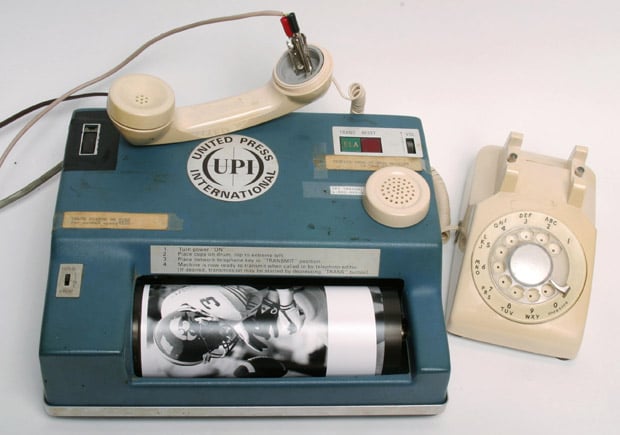This is How Press Photos Were Transmitted Back in the 1970s
In our world of digital photography and high speed Internet, photojournalists can quickly and easily send large numbers of high-res photos to the other side of the globe. Things weren’t always so convenient.
The video above shows what a photo transmitter looked like back in the 1970s. What you see is a United Press International UPI Model 16-S, which scanned photos and then transmitted them using a telephone line.
First, you place a print on the drum and start the transmitter. The drum then rotates at a consistent speed while a scanning beam would move slowly across the photo, scanning one line at a time. Transmitting the analog signal required a connection to a phone line. The Dallas Morning News shares this photo showing how the UPI 16-S could be connected to a rotary phone:

Using this type of transmitter was painfully slow: one black and white photo took 8-9 minutes to send, and subsequent devices for color photos weren’t faster.
“If you were lucky enough to get a perfect telephone line for sending the picture, one color photo took a minimum of 26 minutes to transmit,” Wilkins writes. “Sending internationally took twice as long, sometimes up to an hour per photo.”
The UPI 16-S was used from the early 1970s up through around 1991 as better technologies emerged for transmitting photos.